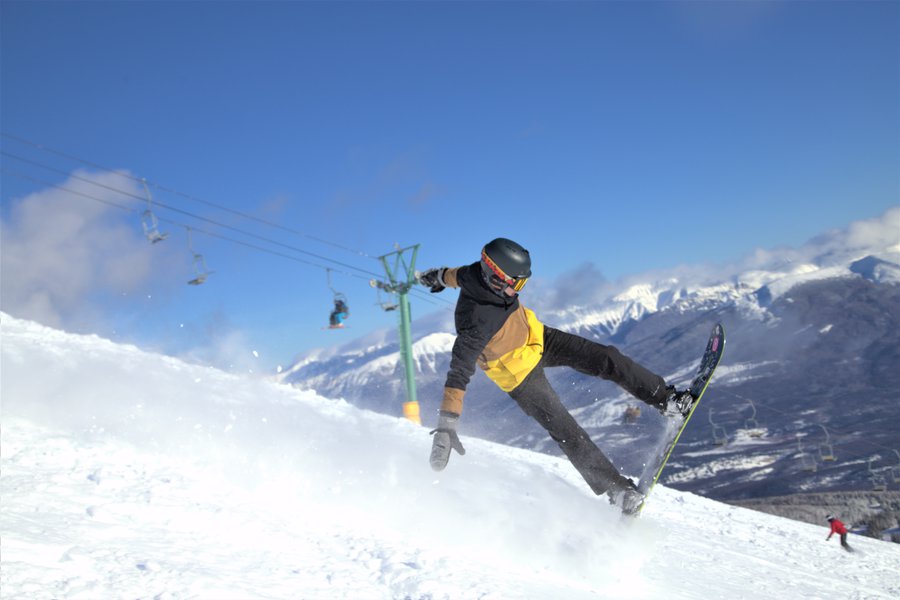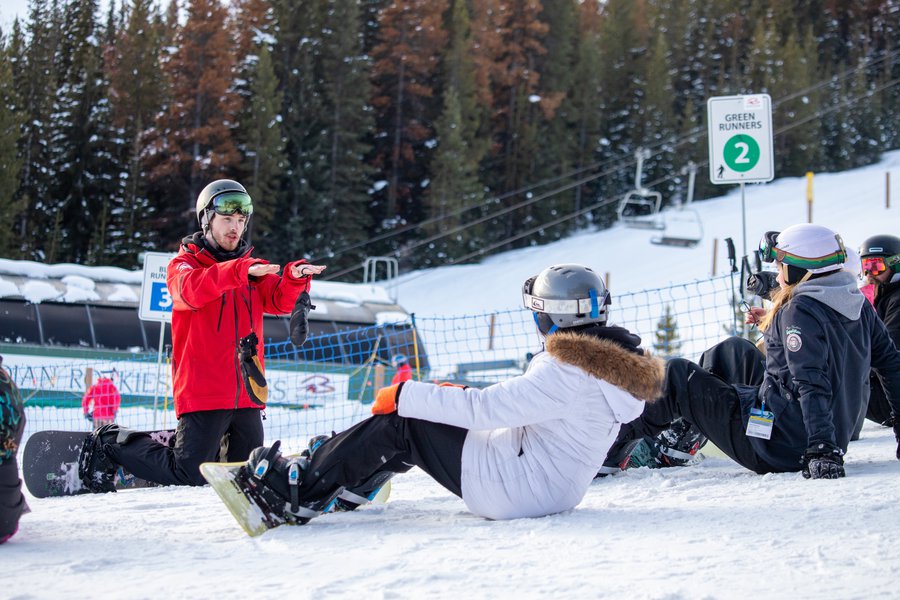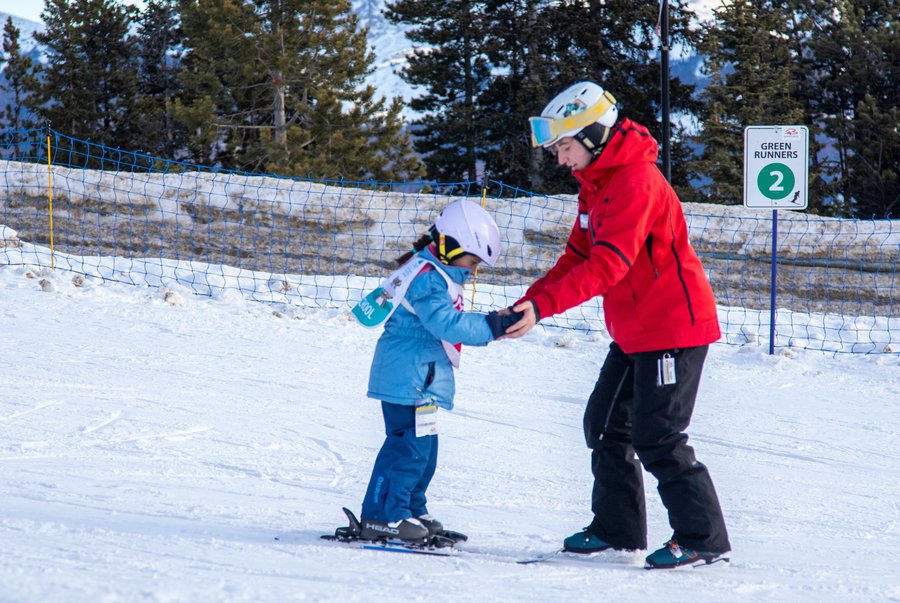A basic guide to falling
We all fall. It’s a fact of skiing and snowboarding. How you fall can be the difference between popping right back up and calling Ski Patrol. It all happens in an instant, but there are things you can practice to minimize the risk of injury.

Falling for Snowboarding
When you’re learning to snowboard you’re likely to fall forwards or backwards. When falling forwards, your instincts tell you to protect your face by putting out your hands. Although landing on your face isn’t ideal, letting your wrists take the impact of your body weight isn’t too comfortable either. If you feel yourself falling forwards, pull your elbows into your sides and hold both hands in front of your chest. Bend your knees to lower your center of gravity and curl your body forwards. When you hit the snow, spread out your body to slow you down and bend your knees to lift the board off the snow.
When your heel edge goes, it’s your tailbone, head and neck most likely in the firing line. As you wipe out, bend those knees and use your hands to protect your neck. Curl your body and roll into the snow. Lay on your back and lift up that board to stop it dragging in the snow if you’re still sliding.

Falling for Skiing
When skiing as a beginner you’re most likely to fall sideways as you learn how to turn. If you’ve lost an edge and are going down piste without a pole, try to fall uphill with a straight arm next to your body and an outstretched leg. This will distribute the weight and protect your weaker joints, such as your elbow, wrist and hand, and ensure you don’t go tumbling down the hill.
Falling forwards on skis is all about protecting your face and wrists. Bend your elbows and bring your arms close to your body, letting your forearms take the impact. If you’re going backwards, try to make an upside down V with straight arms to spread the impact and protect your head, avoiding your wrists.

When you’re learning, you’re going to fall. Taking a lesson with a qualified instructor will give you the tools to be confident on the hill, and have you falling for skiing and boarding in no time - visit out Snow School Page for more information.
Whether you're learning or a pro, head on up to Marmot Basin - it’ll be love at frost sight!


